
















New showrooms now open at Bypass Nurseries, Capel St Mary and Glasswells, Ipswich


















New showrooms now open at Bypass Nurseries, Capel St Mary and Glasswells, Ipswich
19 July – 15 September

Colchester Castle is proud to announce that Gaia, a captivating six-metre diameter touring artwork, is now open to the public. Crafted by the talented artist Luke Jerram, this mesmerising piece brings the Earth's beauty to life, offering visitors a unique perspective on our planet.
Developed in collaboration with the Natural Environment Research Council (NERC), Bluedot, and the UK Association for Science and Discovery Centre's, Gaia showcases intricate 120dpi NASA imagery, displaying the Earth's surface in remarkable detail.
Visitors to Colchester Castle over the summer will be able to experience our planet floating in three dimensions, fostering a profound connection to Earth.
Inspired by the Overview Effect, Gaia offers a transformative experience, highlighting the interconnectedness of all life and encouraging environmental responsibility. The artwork is 2.1 million times smaller than the real Earth, with each centimeter of the sculpture representing 21km of the Earth's surface. By standing 181m away, visitors can view the Earth as it appears from the moon, creating a humbling and awe-inspiring sense of scale.



Accompanying Gaia is a specially crafted surround sound composition by BAFTA awardwinning composer Dan Jones, enhancing the immersive quality of the installation.
In Greek mythology, Gaia personifies the Earth, and this artwork pays homage to our planet's beauty and complexity. The imagery is meticulously compiled from NASA's Visible Earth series, ensuring accuracy and authenticity.
Cllr Natalie Sommers, Portfolio Holder for Communities, Heritage and Public Protection said, "Gaia's arrives at Colchester Castle in time
for the summer holidays providing the perfect day out, for all ages. The sheer size and scale of the artwork is breathtaking. Don't miss the chance to witness it and see how art, science, and the wonder of our planet converge for a truly unforgettable experience!”
Gaia is included in standard Castle admission and will be on display from 19 July – 15 September 2024.
Discover more: Gaia | Colchester Museums







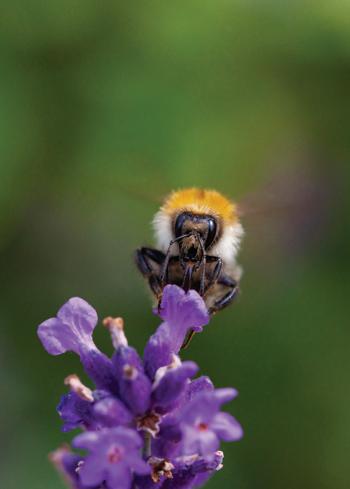



































































































































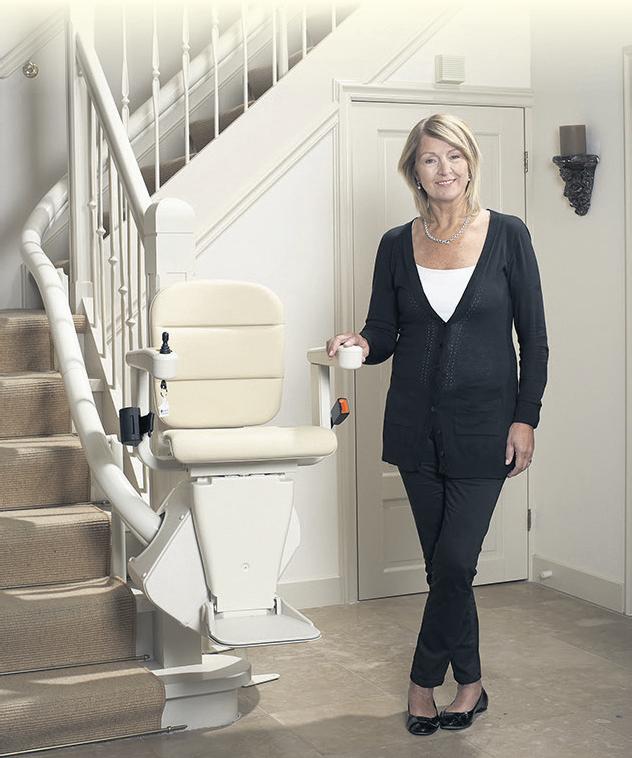













Queenie by Candice Carty-Williams
Queenie Jenkins, a 25-year-old British-Jamaican journalist in London, faces a life-altering change when her white boyfriend, Tom, suggests a break. She is forced to reassess her life, questioning her actions and identity.
Queenie could be ‘just another chick lit novel’ about a twentysomething navigating her career and relationships. She has been called the Black Bridget Jones, but if this is the case then it’s Bridget Jones without the cushion of middle-class white privilege.
Throughout the novel, Queenie confronts and challenges various forms of micro-oppressions and injustice. Carty-Williams tackles societal issues head-on; the depiction of casual systemic racism is eye-opening, and handled with a deftness and inside humour of one who has experienced all of it. Queenie and her friend Kyazike are compelling in their struggles and resilience, offering a portrayal of young Black women just living their lives, which is often missing in books and media.
Queenie's experiences as a woman are relatable for the majority of young women, evoking laughter one moment and discomfort the next. It’s an honest depiction of life as a twenty-something in a big city. Despite covering many important topics, it's an easy read. The humour is sharp, and the storytelling fosters a deep empathy with the characters. The reader will care about Queenie as she battles her demons.
Carty-Williams has managed to strike a balance between light and dark, reinventing the rom-com to include significant issues. This
blending of tones makes this a cut above the usual romantic holiday read.
The Girl Who Stole an Elephant by Nizrana Farook
This is an exhilarating adventure set in a lush, fictional part of Sri Lanka. Chaya is a spirited and courageous young girl who quietly champions the poor, the injured, and the widowed. The way she funds these charitable deeds is a little questionable, but readers will love her anyway. Chaya's attempt to help an injured villager lands her, her best friend, and a new girl in town in a LOT of trouble. What starts out as a robbery of the Queen's jewels ends up in a wild chase as she steals the king's elephant and unwittingly sets off a thrilling chain of events.
Farook's narrative is full of fastpaced action, which young readers will love. The lush tropical setting of Serendib is full of details that transport the reader to the exotic land. Chaya is an engaging hero, whose bravery and sense of justice are matched by her loyalty to her friends.
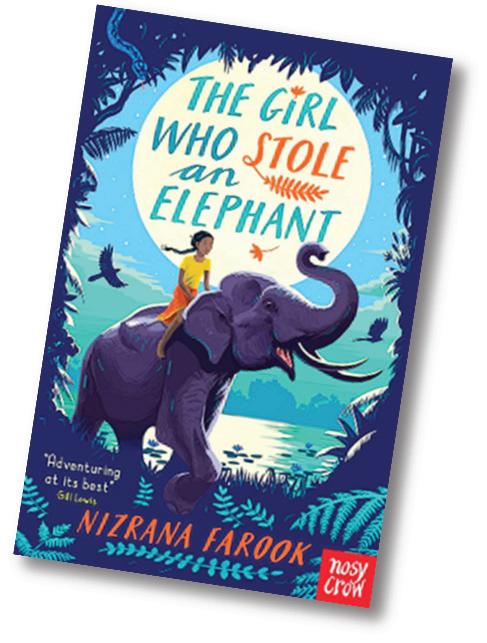
The book tackles themes of friendship, loyalty, and the fight against injustice, making these concepts accessible to young readers through the dynamic plot and relatable characters. Neel and Nour, add depth and diversity to the story, each bringing their own strengths and challenges to the group dynamics.
The Girl Who Stole an Elephant is a thrilling ride that manages to subtly explore issues of social inequality and the implications of rebelling against it. Farook skilfully balances moral questions with exciting escapades, making this a thoughtful yet fun story for young readers.
By Tash Donovan
regular gift of just £5 a month could go towards supporting young cancer patients through our Care Packages, Age-appropriate Rooms in hospitals and Research. Not only will you be giving a brighter future to teenagers and young adults with cancer but also a future to bees, wildlife, and the environment.




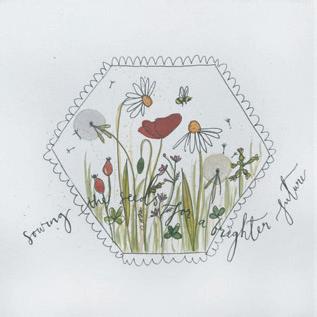




on how your donation is changing lives























Thanks to Count Dracula, bats get a bad rap. International Bat Night hopes to change our perception. During this annual celebration, public events such as bat walks, take place across the country.
Bats make up just over a quarter of the UK's mammal population and they are the only ones that can fly. There are 18 native species plus occasional migrant visitors, and populations are under threat from predation, crime and habitat loss, so UK bats and their roosts are protected by law.
Pipistrelles are our commonest bats, weighing in at just 5 grams (less than a £1 coin). Noctules are our largest bat but still measure less than 5cm long!
Bat wings are wonderful examples of biomechanical engineering. They are constructed in a similar way to human hands, only with membrane of skin stretched between the elongated, delicate fingers. Bat bones are very slender and flexible, and because their
wings are much thinner than bird wings bats can manoeuvre more easily at speed.
Bats fly and feed in the dark, and all UK bats live on insects, which they find using echolocationproducing a stream of high-pitched calls and listening to the returning echo. They 'see' best using sound but contrary to popular belief they are not blind.
The saying about having 'bats in the belfry' is not accurate because they rarely roost in church towers, preferring somewhere quieter, and less draughty. They prefer houses, and cause very few problems as they are neither noisy nor smelly and most householders are usually unaware of their presence. If bats do set up home in your roof, their access must not be impeded. If you’d like to encourage these interesting little creatures to your garden you can buy or make bat boxes to fix to outside of your home. Help, advice and general information on Britain’s bats is available at www.bats.org.uk.



(abbr) (6)
(U.S) (8)
emperor (4)
Supplanting (8)
(8)
atmospheric pressure
a weather map (6) 18 Tramp, drifter (6) 19 Drug, sedate (4) 20 Trickle, plop (4)







Receiving disappointing A-level results can be a stressful, disheartening experience, but it's important to remember that it's not the end of the world. Here are some steps to help you navigate this challenging time:
1. Stay Calm and Seek Support
First, take a deep breath. It’s crucial to remain calm and composed. Talk to family, friends, and teachers about your results. They can offer valuable support and perspective during this time.
2. Review Your Options
Visit the UCAS website to explore Clearing. Clearing allows you to apply for courses that still have vacancies. Many universities offer great courses through this system. Check the UCAS Track to see if you are eligible and browse available courses.
3. Contact Universities
If you missed your firm or insurance offers, don’t hesitate to contact the admissions departments directly. They may still accept you, particularly if you were only marginally off the required grades or have relevant experience that could make you a valuable candidate.
4. Consider Re-marks and Resits
If you believe there’s been a mistake with your grades, speak to your school about the possibility of getting your papers re-marked. Additionally, resitting exams is another option. Though it means an extra year, it could improve your chances of getting into your desired course.
5. Explore Alternative Paths
Look into alternative qualifications, apprenticeships, or vocational courses. These can offer practical skills and experience that are highly valued in the job market. Taking a gap year to gain work experience or travel can also be beneficial and give you time to reassess your options.
Remember, many successful people faced setbacks during their education. Use this experience as an opportunity to explore new avenues and grow stronger in your career journey.
By Tracey Anderson
puzzle solutions:


In 2023 a survey of 71,400 children and young people by the National Literacy Trust revealed that fewer than one in three children (28%) aged eight to 18 read daily for enjoyment.
If that’s true it’s incredibly sad. Blame is apportioned to politicians, teachers, the TV, and internet, but blame doesn’t achieve anything. Instead, as parents what can we do to encourage our children to engage with literature? Try these great tips to engage reluctant readers.
Let them see you reading! It sounds obvious but it works. Read some funny bits from your own book aloud to them or try an interesting newspaper article.
Try to schedule a small part of the day for reading. It doesn’t even

have to be them reading. My ten-year-old son still loves me to read to him…especially when I put on accents and voices to suit the characters. Lose your inhibitions and have fun with reading and your children will follow suit.
Try a joke book or nonsense poetry books. Kids love jokes and rhymes, the sillier the better. They won’t even realise they are reading as they regale you with their newfound anecdotes and ditties.
Use the power of movies. My ten-year-old really engaged with reading when he saw the first Harry Potter movie. He read the book straight afterwards and realised how much richer in detail it was compared with the film. From then on he was hooked.
By Sarah Davey

Brilliant barbecue food. The sauce is so delicious you’ll be dipping everything into it!
Preparation time:
20 mins + 30 to marinade
Ingredients
Marinade
1 tbsp coriander seeds
Cooking time: Satay 10 minutes. Grilled Chicken 20-25 minutes
3 garlic cloves, finely chopped.
2.5cm piece of ginger, finely chopped
3 tbsp finely chopped lemongrass
2 kaffir lime leaves, shredded
1 tbsp vegetable oil
1/2 tbsp soy sauce
1/2 tbsp brown sugar
500g skinless, boneless chicken thighs
Method
Toast the coriander seeds in a dry pan until fragrant, and then grind to a powder in a pestle and mortar. Add the garlic, ginger, lemongrass and kaffir lime leaves and pound to a rough paste along with a generous grinding of black pepper. Transfer to a large bowl and stir in the oil, soy sauce and sugar.
For the sauce
Serves: 4
2 bird’s eye chillies seeded and finely chopped
5 shallots, finely chopped
3 garlic cloves, finely chopped
1/2 tsp shrimp paste
1 tbsp vegetable oil
150ml coconut milk
2 tbsp brown sugar
150g unsalted peanuts, roasted and roughly chopped (or finely ground if you prefer a smoother sauce)
Juice of 1 lime
Cut the chicken into long strips about 3cm wide and stir into the marinade, mixing well. Cover, refrigerate and leave to marinade for at least 30 minutes. While the chicken is marinating soak eight wooden skewers in water until ready to use.
Meanwhile, make the sauce. Put the chillies, shallots, garlic, and




shrimp paste into a pestle and mortar, or the small bowl of a food processor, and pound or blitz to a paste. Heat the oil in a wok or wide frying pan, and then fry the paste for a couple of minutes or until it smells cooked. Add the coconut milk and brown sugar and simmer for a couple more minutes, then add the peanuts and simmer until slightly thickened. Stir in the soy sauce and lime juice, add a little water or coconut milk if it's too thick, then taste to check the



balance of flavours; add more lime juice, sugar, or soy sauce to your own taste. Serve warm or at room temperature.
Thread the strips of meat onto the skewers in an "S" shape. Pushing them down so they all touch. Cook the skewers on a barbecue, or a griddle pan over a medium-high heat, for about 20 minutes until cooked through, turning regularly. Serve with the sauce, crispy fried shallots, and a green salad.


Deadheading is quite simply, the removal of dead flower heads from a plant. It's one of the most important August jobs in the garden.
Faded, browning flowers can spoil the appearance of beds, borders and containers, especially in small gardens where each individual plant has more of a starring role.
In addition:
• Plants put more of their energy into stronger growth and more flower production, instead of producing seeds (obviously leave the flowerheads untouched if you WANT seeds).
• It prevents plants from selfseeding. Some plants that self-seed readily can become a nuisance, such as sea holly (Eryngium) and lady's mantle (Alchemilla mollis).
• It prevents petals scattering everywhere.
Deadheading is best carried out as soon as the blooms begin to look
scruffy. For some plants, such as summer bedding, this might be a daily task, whereas for others it can be carried out weekly. Some plants, like lilacs might only need deadheading once, after a brief blooming period. I don't worry about timing too much. I usually take off fading flowers as I'm pottering about in the garden of an evening.
The simplest method is to pinch or snap off the spent blooms with a finger and thumb, aiming to remove the flower with its stalk, to keep the plant looking tidy. For plants with tough or stringy stems, you use secateurs, scissors or even a knife. On most plants, trim the dead flower just above the next bud or leaf on the stem.
Plants like delphiniums and lupins produce heads of multiple flowers. In this case pinch off individual flowers and then eventually, when all the flowers have died, prune the entire head to just above a lower bud, leaf or side shoot. Some plants, like hardy geraniums, cat mint (Nepeta) and lady's mantle

(Alchemilla), will produce a second flush of flowers if you cut them back close to ground level after flowering.
Not all plants need to be deadheaded. Fuchsias, obligingly and neatly deadhead themselves, saving you the trouble. Others don't set much seed in the first place (e.g. bedding lobelias). Some plants, such as Deutzia and Spiraea produce so many flowers that deadheading becomes impractical, and some are simply too tall to reach!
I never deadhead rudbeckias, cornflowers, sunflowers, viburnums, Amelanchier and
rambling roses because the birds love to eat the seeds, berries and hips they produce.
And finally, the other plants that don't require deadheading are probably my favourites, those which have ornamental seedhead as attractive as their flowers, such as love-in-a-mist (Nigella) and Chinese lantern plants (Physalis alkekengi).
If you're looking for a super simple way to increase the flowering potential of your garden this summer, try a spot of deadheading.
Happy gardening,















1 Goal’s beginning to stir up game (6)
4 Ray waits nervously for flight (8)
9 Tart performs turn to entice (7)
11 Takes permanent possession of building extensions (7)
12 Runs into policeman with whip (4)
13 In discussion, brought up money (5)
14 Caught old king with Ecstasy and another drug (4)
17 Take back a sum fellow distributed to earn money quickly (4,1,4,4)
19 He said I’ll test new TV receiving
1 In Georgia a locum cured eye disease (8)
2 Viewpoint of striking appearance (7)
3 Slovenly woman is scum (4)
5 Angrily remove football shirt and give reprimand? (4,1,5,3)
6 For starters, it’s now no smoking in pubs (4)
7 Increase labour of one in Tussaud’s (7)
equipment (9,4)
22 Chap providing article about Los Angeles (4)
23 Edible bulb used in canneloni only (5)
24 Sick son takes seat in church (4)
27 Search for drink before playing game (7)
28 I plunged into one river then another with lack of success (7)
29 Exciting tale involved her till end of November (8)
30 He needs new teacher for London area (6)
belt Rudy viciously (4,1,5,3)
15 The world is heartbroken (5)
16 Accepting rule finally, leave in peace (5)
18 Food, reportedly chief Chinese dish (4,4)
19 M-master possibly showing this speech defect (7)
20 Take legal possession of one thousand quid (7)
26 Concealed English leather (4) Answers on page 14
8 Enemy’s confused by sycophants (3,3)
10 Pretend not to have seen Annie
21 Repeat standard codswallop (6)
25 Bucket gives Penny trouble (4)

Colchester City Council is looking to launch a dedicated Focus Group to guide the future of our open spaces, parks and playground refurbishments, ensuring inclusivity and accessibility for all children and families. This initiative is part of the council's commitment to creating the best open spaces, parks and play areas that cater to the diverse needs of our community.
The first meeting of the Focus Group will be held on Saturday 10 August at 10am at the Castle Park playground. This initial
gathering will focus on discussing accessibility requirements for the Castle Park playground as part of the ongoing public consultation exercise. The meeting is expected to last approximately one hour. The council is seeking representatives from various groups, including those advocating for people with disabilities and those with other specific needs, to join the Focus Group. These representatives will play a crucial role in ensuring that future playgrounds are designed with
inclusivity in mind. Annual focus group meetings will be scheduled in June or July, aligned with the play park improvement schedule and budget planning. Members will also receive updates via email regarding any additional open space, park or playground projects identified throughout the year.
Councillor Martin Goss, Portfolio Holder for Waste, Neighbourhoods and Leisure, said: "We are committed to making our playgrounds accessible and enjoyable for all children. The
formation of this Focus Group is a significant step towards achieving that goal. We encourage community members with enthusiasm for inclusivity to join us in this important work."
Interested parties who wish to join the Focus Group and attend the first meeting on 10 August should email parks@colchester.gov.uk to express their interest.
The ongoing survey to gather community input on the future of the Castle Park playground can be completed here.
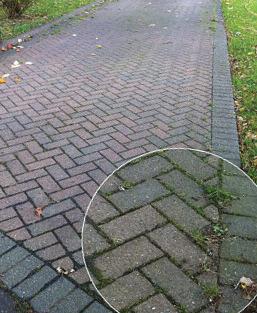

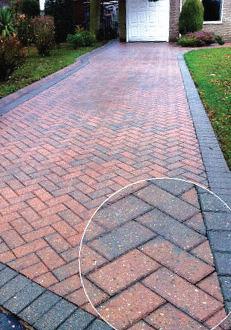


In a home office, everything you interact with - from your desk to your chair to the lighting – should maximise comfort and productivity.
Start by ensuring your work surface is at the right height. Sit in your chair, with your feet firmly planted, and take a look at where your natural elbow height falls. Ideally the height of your desk will be aligned with your natural elbow height.
A good chair promotes movement. The back and forth, the act of reclining and changing positions is
important because you're actually lubricating the discs of the spine.
Work on balancing the overall light in the room with task light. Bad lighting has many consequences, including eye strain and irritable eyes. A seven-watt LED should provide more than enough task light for most workers. The ambient light - the overall light in the room - should be no more than 270 lux, (the measure of light intensity).
And careful if you favour a laptop. Using the keyboard and mouse integrated into a laptop has
postural implications. You're more likely to lean forward, break contact with the backrest, and engage in what's called trunk flexion, which is a postural problem when you lean forward that results in higher disc compression, muscle fatigue and discomfort.
With the office set up correctly, it's time to organise. There is a concept in interior design called ‘prime real estate.’ These are spaces that are most visible and easiest to access. You want to get those spaces working for you.
Vertical file holders that sit on top of a desk, or boxes that you can fill with hanging files are good for these areas. They function like a mini filing cabinet for current projects. For less pressing documents, try bankers’ boxesthey have covers, they're stackable, and inexpensive.
The key to ensuring that you don’t end up drowning under a mountain of papers is daily desk hygiene - routinely clearing things out of your office. You might find it easier to let go of extra paperwork
when you learn that 80-90% of filed papers are never referred to again! Finally, consider aesthetics. If your home office is a depressing beige windowless room, you probably won't enjoy spending time there. Find a room with a view you like. If you don't have a view, use a piece of artwork that you love instead. Think about the colour palette. Some people prefer soft neutrals while others prefer a brighter scheme. And working from home means you may have to take Zoom calls, so consider creating a Zoom wall which reflects your interests. For example, if you like travel, position a beautiful large map behind you. If you're a keen gardener you can use plants or cut flowers. An avid reader might create a book display. Keep it simple though; it should be a hint of who you are, but you want the caller to focus on your face, and what you're saying.
Once you're set up, all that's left to do is take the business world by storm!
By Sarah Davey
Fill in the grid so that each row, column and 3x3 box, contains the numbers 1 through to 9 with no repetition.
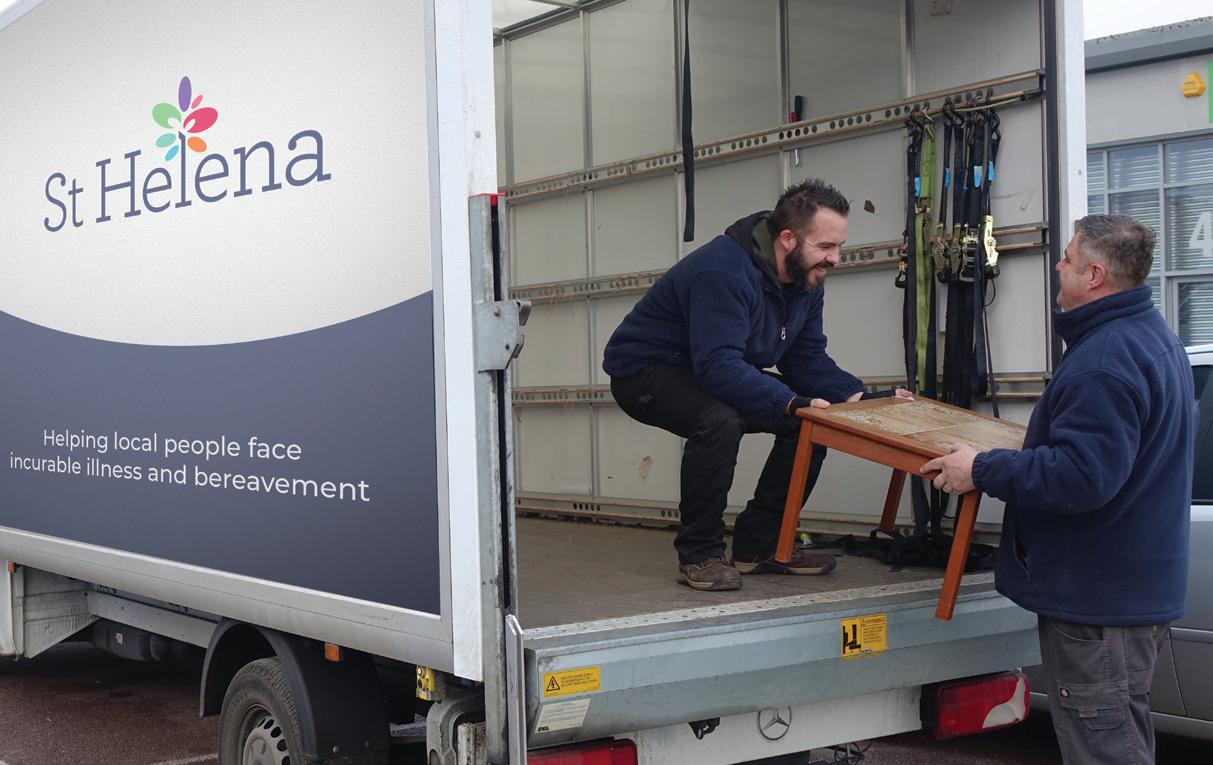
You don’t need to be a genius. These puzzles use logic alone. Watch out! Sudoku is highly addictive.


Growing up in the Midlands my friend Rory was the first kid on the block to own a proper bona fide shop-bought skateboard. The rest of us made do with home-made Heath Robinson affairs cobbled together by our dads.
Skateboarding came to the UK in the early 1970s, primarily through American magazines and the growing influence of the Californian surf culture, so our little gang were early adopters. We were inspired by images of our American counterparts gliding effortlessly through urban landscapes. In stubbornly suburban Stratford on Avon, we were hampered by a lack of proper equipment and facilities.
Our parents (with the exception of Rory’s impossibly cool mum and dad) were largely dismissive, viewing our passion as a fleeting fad.
As the popularity of skateboarding surged in the mid-1970s, the UK's first purpose-built skate park, Skate City, opened in 1977 in London. This indoor park featured a variety of ramps and bowls, allowing skaters to practice and innovate safely. Skate City set a precedent, and soon other cities, including Brighton, Southsea, and Harrow, followed suit with their own parks. The home of the Bard, to our dismay, did not.
Southsea Skatepark, opened in 1978, remains one of the oldest surviving
skate parks in the world. It became a crucial hub for the UK skateboarding community. Stratford had to wait another 20 years!
The late 1980s and early 1990s saw a decline in skateboarding's popularity. Many parks closed or fell into disrepair due to lack of funding, insurance issues, and declining participation. However, the underground skate scene kept the spirit alive, with skateboarders continuing to innovate and adapt urban spaces for their use. Street skating became the dominant style during this period, transforming staircases, handrails, and plazas into makeshift skate spots.
The late 1990s marked a revival, fuelled by the rise of skateboarding brands, professional skaters, and media exposure. The X Games, launched in 1995, played a significant role in bringing skateboarding back into the mainstream. This resurgence led to renewed interest and investment in skate parks though by then my knees were no longer up to the challenge!
Today, the UK boasts a vibrant skateboarding scene with numerous world-class skate parks. Facilities
such as BaySixty6 in London, Dean Lane Skatepark in Bristol, and The House Skatepark in Sheffield have become central to the community. The design and construction of these parks have evolved, with an emphasis on sustainability and community engagement.
Skateboarding is now an Olympic sport, having debuted in Tokyo in 2020 (postponed till 2021 due to the pandemic). The Olympics is a perfect vehicle to showcase the sport's global appeal and competitive spirit. British skaters like Sky Brown, who won a bronze medal in Tokyo, will be hoping to build on their past success and inspire a new generation of skateboarders.
Rory became a physiotherapist, probably inspired by the number of his friends who sprained, broke and otherwise damaged various bits of ourselves while perfecting our ollies and kickflips!
Wherever he is I hope he’s never lost touch with his inner skater!
By Si Mansfield





Permanent makeup involves implanting pigments into the skin's dermal layer using a needle. This technique can be used to define eyebrows, enhance eyeliner, and create fuller-looking lips. Semipermanent makeup, while similar, uses pigments that fade over time, typically lasting between one to three years, depending on factors such as skin type and aftercare.
Benefits of Permanent and SemiPermanent Makeup
Convenience: The most significant advantage is the time saved on daily makeup application. This is particularly beneficial for individuals with busy lifestyles, athletes, or those with conditions like tremors that make applying makeup challenging.
Consistency: Permanent makeup ensures a consistent look, eliminating worries about smudging or reapplying throughout the day.
Enhanced Features: The procedures can enhance natural features, providing fuller eyebrows, defined eyes, and more pronounced lips. Great for those of us with sparse hair or uneven features.
Confidence Boost: Many people report feeling more put-together and polished once they have completed the procedures.
Despite its benefits, both permanent and semi-permanent makeup come with potential risks:
Infection: If not performed under sterile conditions, there is a risk of infection. The practitioner should use sterilized equipment and follows proper hygiene protocols.
Allergic Reactions: Some individuals may suffer an allergic reaction to the pigments used. It’s important to conduct a patch test before undergoing a full procedure.
Unsatisfactory Results: There's always a risk that the results may not meet expectations. This could be due to the skill of the practitioner or how the pigment interacts with your skin.
Fading and Discoloration: Over time, pigments will fade or change colour, potentially leading to an uneven appearance.
Choose a qualified practitioner to minimize risks and maximise the chance of satisfactory results. Here are some tips on recognizing a qualified professional:
Certification and Training: Verify that the practitioner has undergone formal training from a reputable institution. They should hold certifications in cosmetic tattooing or micropigmentation.
Licensing: In the UK, practitioners must be licensed by their local council. Check that the practitioner operates in a licensed facility, complying with all health and safety regulations.
Experience: Look for a practitioner with extensive experience. Request
A sign of the Times
to see before-and-after photos of their work and read reviews from previous clients.
Consultation: A good practitioner will offer a thorough consultation to discuss your expectations, explain the procedure, and perform a patch test to rule out allergic reactions.
Cleanliness and Professionalism: The treatment area should be clean and hygienic. The practitioner should use disposable, single-use needles, and wear gloves during the procedure.
Permanent and semi-permanent makeup offer a range of benefits, but it is essential to be aware of the potential risks and make sure you choose a qualified practitioner to ensure a safe and satisfactory experience. By following the guidelines outlined above, you can enjoy the convenience and confidence that come with these cosmetic procedures while minimizing any associated risks..
By Louise Addison
The story behind the famous Hollywood sign.

We all know the Hollywood sign is an iconic symbol of the entertainment industry. But did you know that is has a fascinating history?
Its story begins in 1923 and has nothing to do with the entertainment industry. It was actually erected to advertise a new housing development in the Hollywood Hills. Developer Harry Chandler, in collaboration with the Los Angeles Times, wanted a bold marketing tool to attract potential homeowners to the area. The sign originally read "HOLLYWOODLAND" and was intended to last only for about a year and a half.
It cost $21,000 to build, which was a significant sum at the time. The letters were made of wood and sheet metal, and were 50 feet (15m) high. At night it was illuminated by approximately 4,000 light bulbs, which made it visible for miles around.
During the Great Depression in the 1930s, the Hollywoodland real estate development, like many others, faced financial difficulties. The sign was abandoned and began to deteriorate. By the 1940s though, the Hollywood Chamber of Commerce recognized its potential as a symbol of the burgeoning film industry and took steps to preserve it. They removed
the "LAND" portion, leaving just "HOLLYWOOD".
By the 1970s, the sign had fallen further into disrepair. The wooden letters were sagging, and some had even fallen over. Recognizing the sign's cultural importance, the Hollywood Chamber of Commerce and a group of concerned citizens launched a campaign to restore it.
Hugh Hefner, founder of Playboy magazine, hosted a fundraising gala at the Playboy Mansion and celebrities of the day "purchased" individual letters, raising the necessary funds for restoration.
In 1978, the sign was dismantled, and a new one was constructed, this time made of steel, designed to withstand the elements. Each letter was 45 feet (14m) tall and 31 to 39 feet (10-12m) wide, and the entire structure weighed 480,000 pounds (217724 Kilos).
Today, the Hollywood sign is maintained by The Hollywood Sign Trust, a non-profit organization dedicated to its preservation. It is an enduring symbol of the
entertainment industry and a major tourist attraction, drawing millions of visitors annually. While the sign itself is off-limits to the public, to prevent vandalism and accidents, several viewing points throughout Los Angeles offer stunning vistas of the iconic letters.
The sign has become a symbol of aspiration and the American Dream, representing the glitz and glamour of the movie industry. It has been featured in countless films, television shows, and photographs, further cementing its status as an icon. Over the years, the sign has also been the subject of pranks and alterations, with people changing the letters to spell out messages like "HOLLYWEED" and "HOLLYBOOB," adding a layer of humour and rebellious spirit to its history.
From humble beginnings the Hollywood sign continues to be a beacon for dreamers worldwide and remains an indelible part of American history and culture.
By Tracey Anderson

The waters around the property market may be choppy, but with the Michaels crew at the helm, we’ll get you to where you really want to be... simply pop in or call our Colchester office to arrange a free mortgage health check and to register with us for updates on property prices and interest rates today.